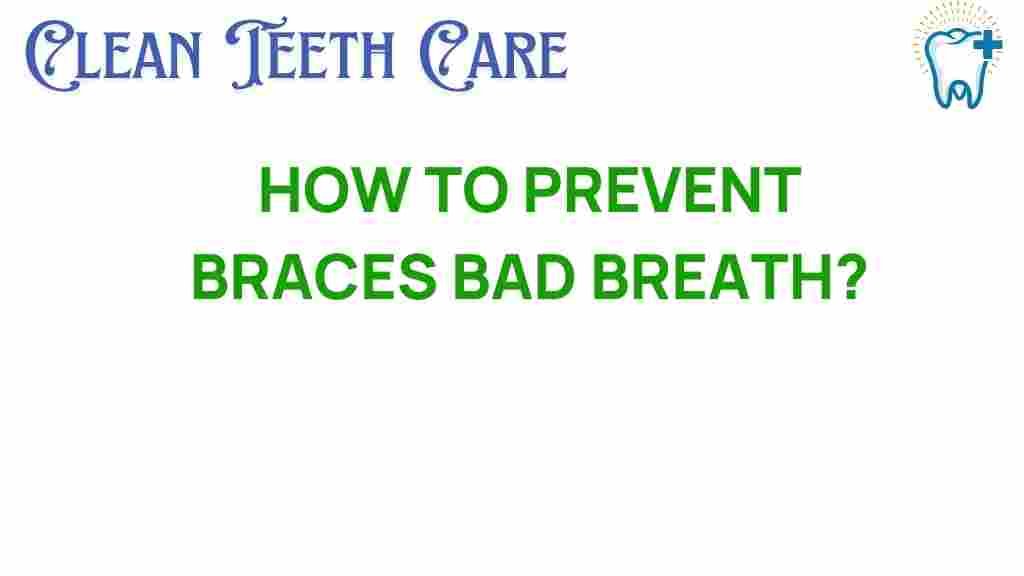Unmasking the Secrets: How to Prevent Braces Bad Breath
Braces are a common orthodontic treatment for kids and adults alike, but they can come with a few unpleasant side effects, one of the most notable being bad breath. Maintaining proper oral hygiene is essential, not just for achieving a beautiful smile, but also for preventing issues like bad breath. In this article, we will explore effective strategies for keeping your breath fresh during orthodontic treatment, ensuring optimal dental care that leads to a healthier mouth.
Understanding the Connection Between Braces and Bad Breath
When you wear braces, food particles can easily become trapped between the wires and brackets. This can lead to an increase in bacteria in your mouth, resulting in unpleasant odors. Additionally, if proper oral hygiene isn’t maintained, plaque buildup can occur, which is another culprit behind bad breath.
The Importance of Oral Hygiene During Orthodontic Treatment
Good oral hygiene is crucial for everyone, but it becomes even more vital when you have braces. Here’s why:
- Prevention of Cavities: Braces can make it easier for food and plaque to accumulate, increasing the risk of cavities.
- Reduction of Gum Disease: Poor hygiene can lead to gingivitis, causing swollen and bleeding gums.
- Fresh Breath: Maintaining a clean mouth reduces the chances of bad breath.
Step-by-Step Process for Maintaining Fresh Breath with Braces
To ensure fresh breath while wearing braces, follow these essential steps for effective dental care:
1. Brush Regularly and Properly
Brushing your teeth is the first line of defense against bad breath. Here’s how to brush effectively with braces:
- Use a soft-bristled toothbrush designed for braces or an electric toothbrush.
- Brush at least twice a day, focusing on the brackets and wires.
- Make sure to angle the toothbrush at 45 degrees to clean around the brackets effectively.
- Spend at least two minutes brushing to ensure a thorough clean.
2. Floss Daily
Flossing is essential for removing food particles that brushing may miss. Use a floss threader or orthodontic floss to make it easier:
- Gently slide the floss between the teeth and around the brackets.
- Make sure to floss every day to prevent plaque buildup.
3. Rinse with Mouthwash
A good mouthwash can help to eliminate bacteria and freshen your breath. Look for:
- Alcohol-free mouthwash to avoid drying out your mouth.
- Antimicrobial mouthwash that targets bacteria responsible for bad breath.
Rinse daily after brushing and flossing to enhance your oral hygiene routine.
4. Maintain a Healthy Diet
Your diet plays a significant role in your breath. Here are some tips:
- Limit sugary foods and drinks, as they promote plaque buildup.
- Eat crunchy fruits and vegetables like apples and carrots to help clean your teeth naturally.
- Stay hydrated to encourage saliva production, which helps rinse away food particles.
5. Regular Dental Checkups
Regular visits to your orthodontist are crucial for maintaining your braces and overall dental health. Here’s what to expect:
- Your orthodontist will check for any issues with your braces.
- They will also clean your teeth and recommend any additional treatments if necessary.
Troubleshooting Bad Breath Issues with Braces
Even with diligent care, you might still encounter bad breath. Here are some troubleshooting tips to address these concerns:
1. Check for Food Traps
If you notice persistent bad breath, inspect your braces for any food particles stuck in the wires or brackets. Use an interdental brush to dislodge any trapped debris.
2. Review Your Oral Hygiene Routine
Evaluate your brushing and flossing techniques. Ensure you are using the right tools and techniques as outlined above.
3. Stay Aware of Your Mouth’s Condition
Dry mouth can contribute to bad breath. If you’re experiencing this, consider:
- Using saliva substitutes or sugar-free gum to stimulate saliva production.
- Drinking plenty of water throughout the day.
4. Assess for Possible Infections
If bad breath persists despite good hygiene practices, consult your dentist or orthodontist. It may be a sign of an underlying issue, such as an infection or gum disease.
Conclusion: Embrace Fresh Breath with Proper Dental Care
Braces can be a fantastic step towards achieving a beautiful smile, but they require extra attention to maintain oral hygiene and prevent bad breath. By brushing and flossing diligently, using mouthwash, maintaining a healthy diet, and keeping regular dental appointments, you can enjoy fresh breath throughout your orthodontic journey.
Remember, proper dental care is not just about aesthetics; it’s about your overall health. For more tips on maintaining your oral hygiene with braces, check out this helpful resource.
With these strategies in place, you can confidently navigate your orthodontic treatment while keeping bad breath at bay!
This article is in the category Hygiene and created by CleanTeethCare Team
